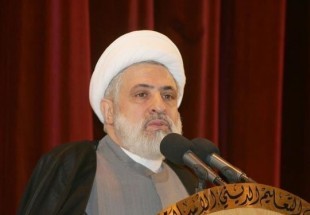“Iran is persistent defender of Muslim world.”

Sheikh Naeem Qassim, Hezbollah deputy, in a speech delivered in southern Beirut criticized Saudi regional policies demanding the Arab kingdom to come to an agreement with Iran as a regional powerhouse, reported Taqrib News Agency (TNA).
He said,” Here we demand Saudi government to provide the grounds for an agreement with Iran in an attempt to back the stability and security of the region particularly when Iran is a major powerhouse in the region and a positive player in sustaining regional stability and security.”
Hezbollah deputy noted Iran’s pursuit of positive strategies for cooperation with Muslims and Arabs saying that the opportunity must be used for a transition to a higher level.
Sheikh Naeem Qassim referred to Lebanon to be situated in a boiling region and said,”Lebanon is engulfed with fire though, contrary to what others portray of its current situation, it has not been affected by the tension and war fueled by Takfiri (excommunication) groups and the Zionist regime of Israel in Syria.”
He stressed,” The reason for invincibility of Lebanon is the behavior of political groups in Lebanon, particularly Hezbollah who is standing against intrigues persisting on saving Lebanon amid the present chaotic situation.”
Lebanese cleric added,” Hezbollah is standing against Takfiri groups with utmost determination and brevity showing the bent for talks as the only option towards a resolution for the disagreements.”







